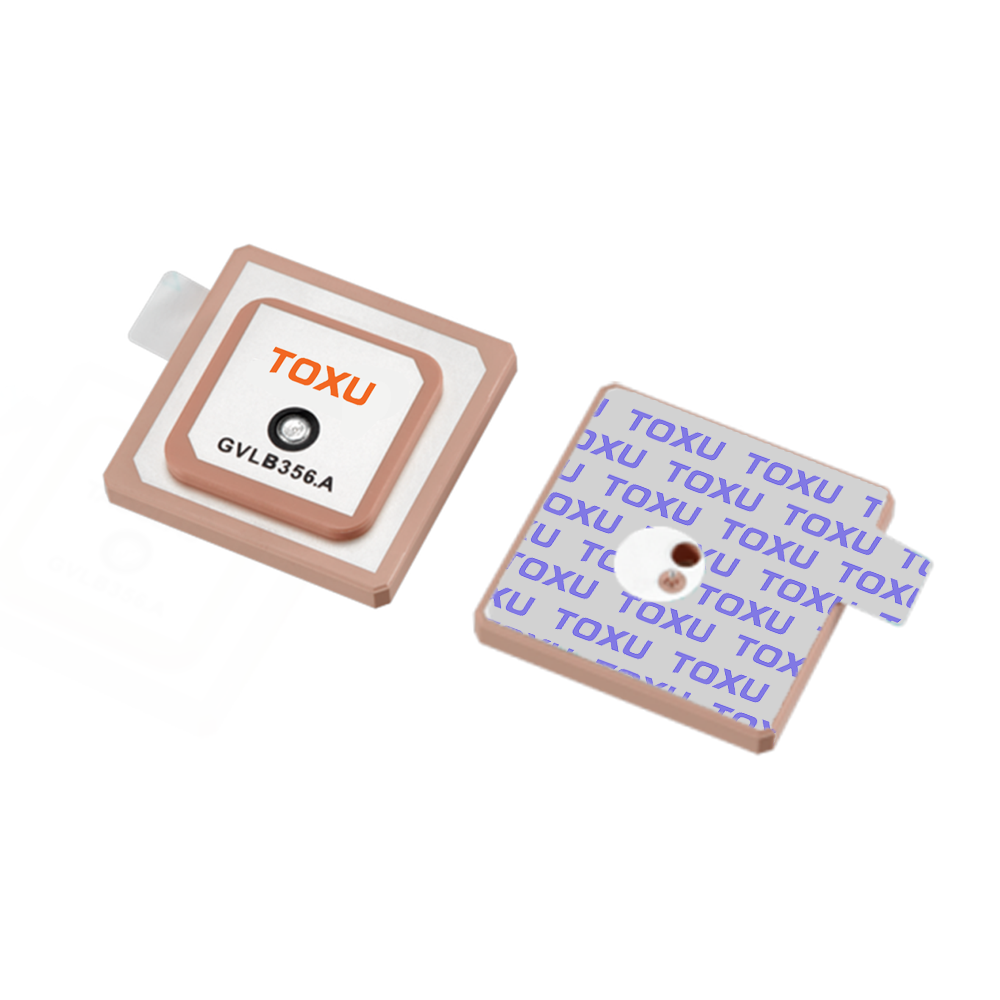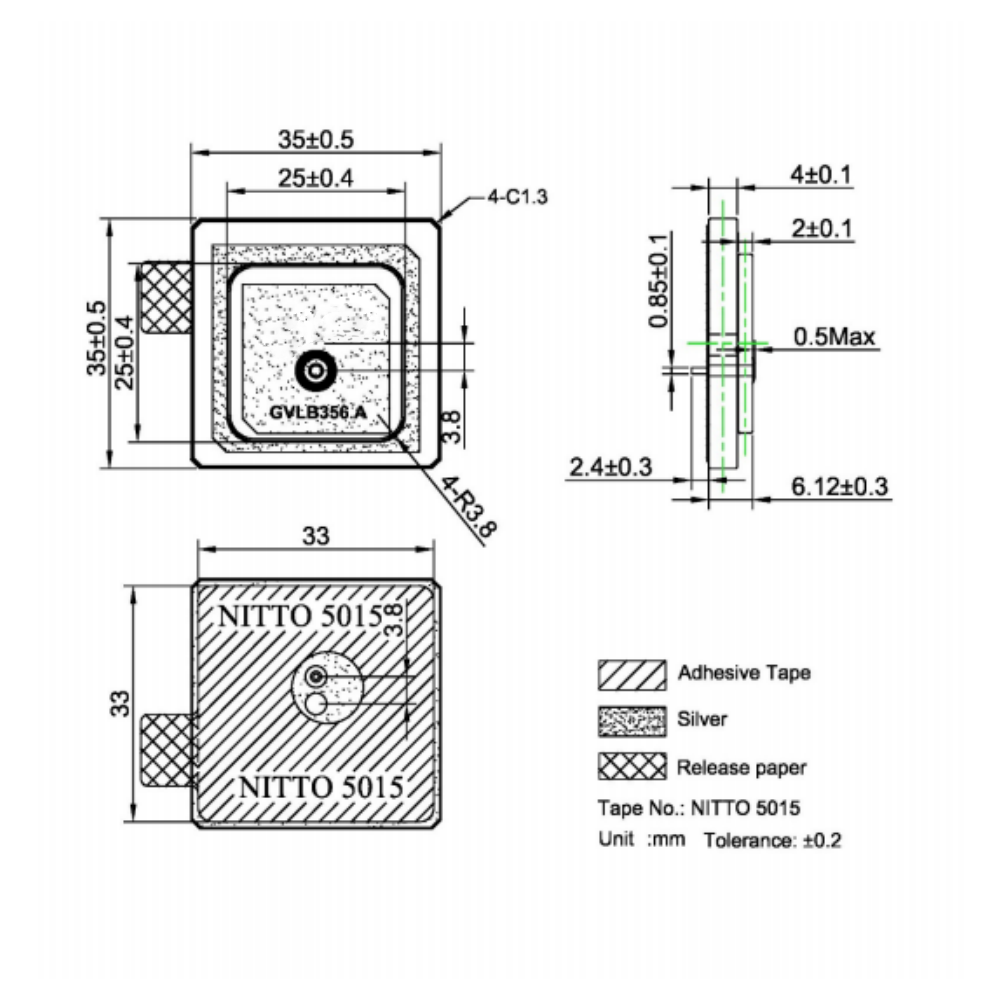5.1 Current Applications
5.1.1 Automotive Navigation and Autonomous Driving
In the automotive industry, GNSS ceramic antennas are widely used in navigation systems. They provide accurate positioning information for drivers, allowing them to navigate to their destinations easily. With the advent of autonomous driving, the importance of GNSS ceramic antennas has grown even more. Autonomous vehicles rely on precise positioning data to make decisions about speed, direction, and obstacle avoidance. GNSS ceramic antennas, in combination with other sensors such as lidar and radar, help autonomous vehicles to accurately determine their location on the road, enabling safe and efficient driving. For example, in a self - driving car, the GNSS antenna receives signals from multiple satellites to calculate the vehicle's position within centimeters, which is crucial for lane - keeping, intersection navigation, and parking.
5.1.2 Aviation and Aerospace
In aviation, GNSS ceramic antennas are essential for aircraft navigation. They are used in both commercial and general aviation. Pilots rely on the accurate positioning information provided by these antennas to plan their routes, approach runways, and maintain safe distances from other aircraft. In the aerospace industry, GNSS ceramic antennas are used in satellites and spacecraft for orbit determination and navigation. For instance, satellites use GNSS antennas to precisely determine their position in space, which is necessary for tasks such as Earth observation, communication relay, and scientific research. The high stability and reliability of ceramic antennas make them suitable for the harsh space environment.
5.1.3 Marine Navigation
Marine navigation also heavily depends on GNSS ceramic antennas. Ships use these antennas to determine their position at sea, which is vital for safe navigation, especially in areas with limited visual references. Fishing vessels, cruise ships, and cargo ships all rely on GNSS - based navigation systems equipped with ceramic antennas. In addition to providing position information, GNSS ceramic antennas can also be used in combination with other marine sensors, such as depth sounders and compasses, to enhance navigation accuracy and safety. For example, in a fishing boat, the GNSS antenna helps the captain to locate fishing grounds accurately and navigate back to port safely.
5.1.4 Internet - of - Things (IoT) Devices
The growth of the Internet - of - Things (IoT) has led to an increasing demand for GNSS ceramic antennas. IoT devices, such as smart meters, asset trackers, and environmental sensors, often require accurate positioning information. GNSS ceramic antennas enable these devices to report their location, which is useful for applications such as logistics tracking, smart city management, and wildlife monitoring. For instance, in a logistics company, GNSS - equipped IoT devices attached to packages can be tracked in real - time, allowing for better supply chain management. The compact size and low power consumption of GNSS ceramic antennas make them suitable for integration into small - sized IoT devices.
5.2 Future Trends
5.2.1 Integration with 5G and Beyond
The future of GNSS ceramic antennas lies in their integration with emerging communication technologies, such as 5G. 5G networks offer high - speed data transfer and low latency, which can enhance the performance of GNSS - enabled devices. For example, in autonomous vehicles, the combination of 5G and GNSS can provide real - time traffic information and precise positioning data, enabling more efficient and safe driving. In the future, as communication technologies continue to evolve, GNSS ceramic antennas may be further integrated with 6G or other advanced wireless technologies, opening up new possibilities for applications such as augmented reality (AR) - based navigation and ultra - precise indoor positioning.
5.2.2 Improved Multiband and Multiconstellation Capabilities
There will be a continuous trend towards improving the multiband and multiconstellation capabilities of GNSS ceramic antennas. As new GNSS constellations are developed and existing ones expand, antennas will need to be able to receive signals from a wider range of frequencies and constellations. This will improve the accuracy and reliability of positioning in all environments. Additionally, the development of advanced antenna designs, such as software - defined antennas, may allow for more flexible and intelligent signal reception, adapting to changing signal conditions in real - time.
5.2.3 Miniaturization and Integration with Other Components
The trend of miniaturization will continue, with GNSS ceramic antennas becoming even smaller and more integrated with other components. In the future, we may see antennas integrated directly into the printed circuit boards of devices, reducing the overall size and cost. This integration may also include combining GNSS functionality with other sensors, such as accelerometers, gyroscopes, and magnetometers, to create more comprehensive positioning and sensing modules. For example, in wearable devices, a single module could integrate GNSS for outdoor positioning, an accelerometer for activity tracking, and a gyroscope for orientation sensing.
5.2.4 Enhanced Performance in Harsh Environments
Research and development will focus on enhancing the performance of GNSS ceramic antennas in harsh environments. This includes improving their resistance to extreme temperatures, humidity, and electromagnetic interference. New materials and manufacturing techniques may be developed to further improve the stability and reliability of antennas in challenging conditions. For example, in deep - sea exploration, where high pressure and corrosive seawater are present, antennas with enhanced environmental resistance will be required to provide accurate positioning for underwater vehicles.
Conclusion
feed networks, and protective packaging, are critical to their ability to operate reliably in diverse environments. Throughout this discussion, we have highlighted how these design elements work in tandem to address the unique demands of GNSS applications—from ensuring signal integrity in urban canyons to withstanding extreme temperatures in aerospace missions.
The advantages of GNSS ceramic antennas, particularly their compact form factor and multiband compatibility, have been instrumental in driving innovation across industries. In automotive systems, they enable the centimeter-level precision required for autonomous driving, while in IoT devices, their miniaturization allows for seamless integration into asset trackers and smart sensors. Their high stability has also made them indispensable in harsh environments, such as marine navigation and agricultural machinery, where traditional antennas often fail to maintain consistent performance.
However, it is important to acknowledge the challenges that persist. Environmental sensitivity, particularly to humidity and electromagnetic interference (EMI), remains a key area for improvement. Urban landscapes, with their dense infrastructure and high EMI levels, continue to test the limits of these antennas, leading to occasional signal degradation. Additionally, the complex manufacturing processes and high material costs associated with ceramic antennas pose barriers to widespread adoption in cost-sensitive markets, such as low-end consumer electronics. These challenges, while significant, are not insurmountable—they instead serve as catalysts for further research and development.
Looking ahead, the future of GNSS ceramic antennas is closely tied to technological advancements in communication and material science. Integration with 5G and upcoming 6G networks will unlock new capabilities, such as real-time data fusion for enhanced positioning accuracy, which is critical for applications like augmented reality (AR) navigation and smart city management. The continued evolution of multiband and multiconstellation support will further improve reliability, ensuring that antennas can leverage signals from emerging GNSS systems, such as the expanded BeiDou constellation or future Galileo upgrades.
Miniaturization will also remain a key focus, with innovations like embedded PCB (Printed Circuit Board) antennas reducing device footprints and enabling new form factors in wearables and micro-IoT devices. Moreover, the development of advanced ceramic composites—such as alumina-zirconia blends—will enhance environmental resistance, making these antennas suitable for even more extreme conditions, including deep-sea exploration and space missions.
In summary, GNSS ceramic antennas have transformed the landscape of navigation and positioning, and their role will only grow in importance as society becomes increasingly dependent on location-based services. While challenges like EMI sensitivity and cost persist, ongoing research and technological advancements are poised to address these issues, unlocking new applications and improving performance across industries. As we move toward a more connected and autonomous world, GNSS ceramic antennas will remain a foundational technology, enabling precision, reliability, and innovation in every sector they touch.




































































 Language
Language
 En
En Cn
Cn Korean
Korean

 Home >
Home > 







 18665803017 (Macro)
18665803017 (Macro)













